Search
Search Results
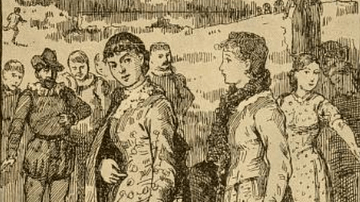
Image
Jamestown Colonists Choosing Brides
Colonists choosing wives, illustration from page 147 of Stories of the three Americas. Their discovery and settlement by Eunice C. Corbett and Anna Content, Chicago, A. Flanagan, 1890 CE.
Library of Congress
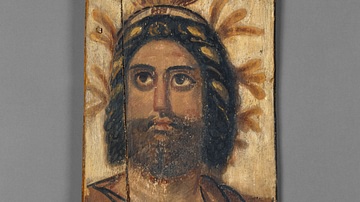
Image
Romano-Egyptian Painting of Serapis
A painting of the Graeco-Egyptian god Serapis, wearing his characteristic grain-counter (modius) on his head. Made in Roman Egypt, c. 100-200 CE. Tempera painting on wood panel. 39.1 × 19.1 cm (15 3/8 × 7 1/2 in). The panel is a part of the...
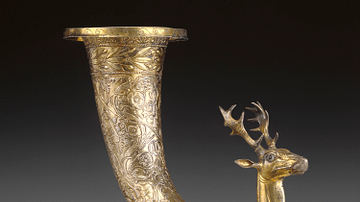
Image
Stag Rhyton
This exquisite gilded silver rhyton (wine drinking horn) terminates in the forepart of a naturalistically rendered stag. Incorporating stylistic elements of Achaemenid and Seleucid traditions, it was made in Parthia (northwestern Iran, ca...
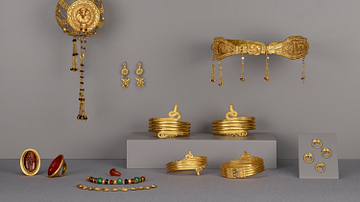
Image
Collection of Ptolemaic Jewellery
This opulent collection of Ptolemaic jewellery from Egypt probably belonged to a wealthy woman and was made between 225–175 BCE. The various pieces were made out of gold and are inlaid with a variety of precious stones. The collection...
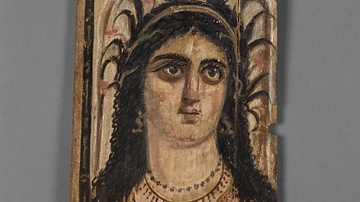
Image
Isis, Roman-Egyptian Panel
This 2nd Century CE tempera painting on wood panel depicts the Hellenized form of the Egyptian goddess Isis. In the Ptolemaic and Roman periods, Eastern deities and cultic practices became increasingly widespread and attracted devotees...
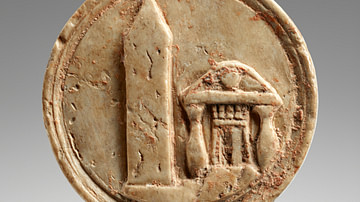
Image
Ivory Token Depicting Egyptian Obelisk and Temple
This 1st Century CE ivory token depicts an Egyptian-style obelisk and temple, probably located in the Alexandrian suburb of Nikopolis. The token was probably produced in Roman Egypt and is now part of the collection of the J. Paul Getty Museum...
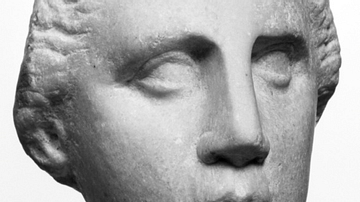
Image
Diademed Head of a Ptolemaic King
This marble portrait of a diademed man is believed to depict a Ptolemaic king. The piece is made of marble from Asia Minor and was produced in Alexandria, Egypt. The portrait is part of the collection of the J. Paul Getty Museum. Digital...
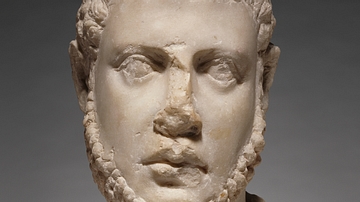
Image
Bearded Head of Ptolemaic Dynast
This roughly worked and approximately life-size marble portrait depicts a member of the Ptolemaic dynasty. The portrait was carved in Alexandria, Egypt, sometime during the 2nd Century BCE and is now part of the collection of the J. Paul...
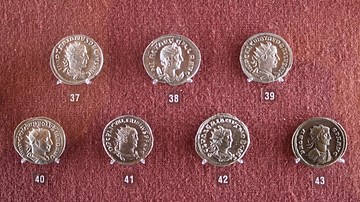
Definition
Roman Coinage
Roman coins were first produced in the late 4th century BCE in Italy and continued to be minted for another eight centuries across the empire. Denominations and values more or less constantly changed but certain types such as the sestertii...
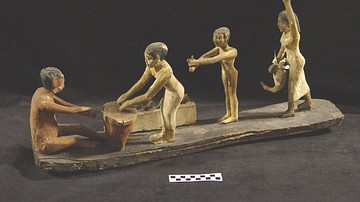
Article
Beer in Ancient Egypt
Considering the value the ancient Egyptians placed on enjoying life, it is no surprise that they are known as the first civilization to perfect the art of brewing beer. The Egyptians were so well known as brewers, in fact, that their fame...